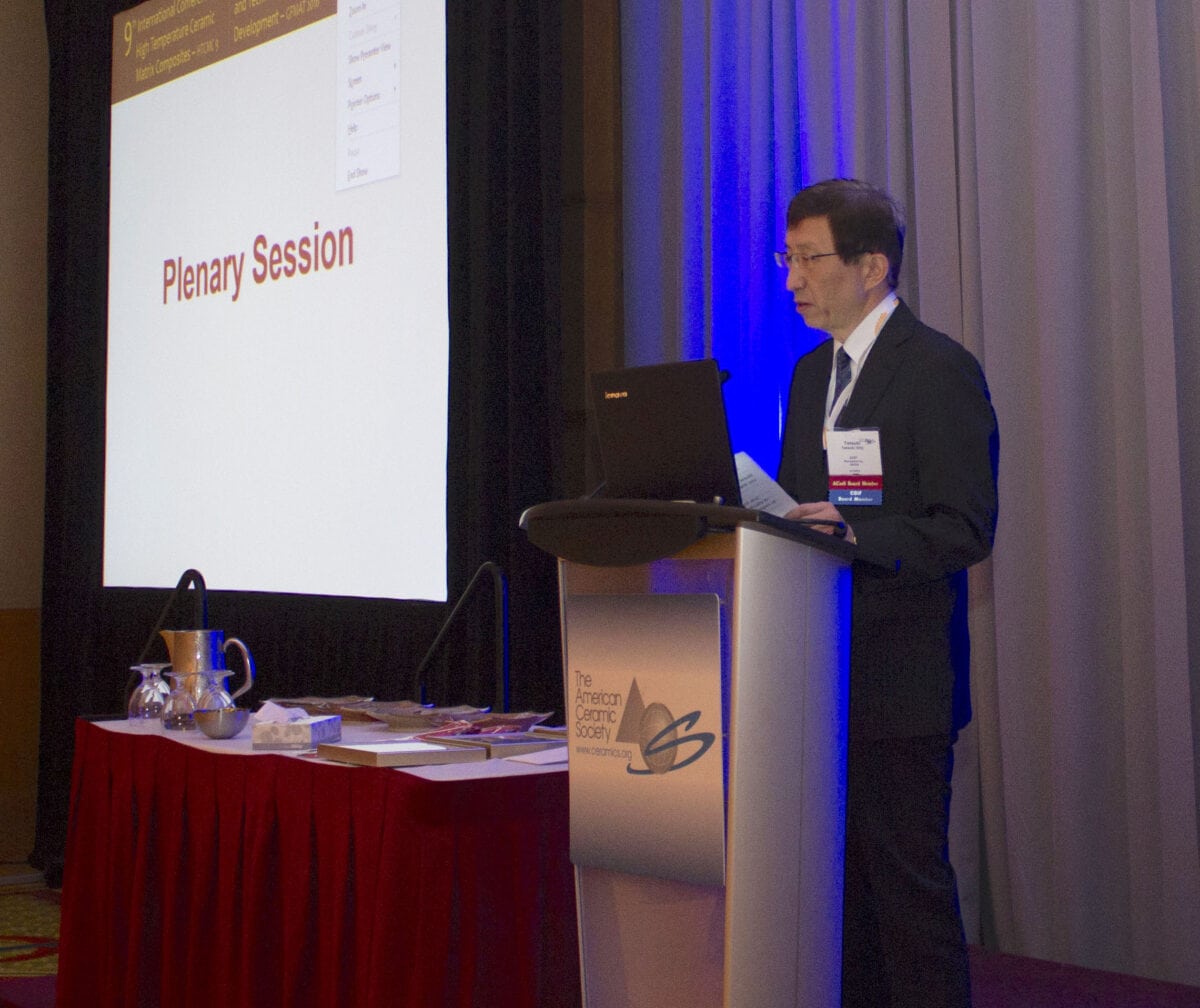
[Image above] Tatsuki Ohji, lead chair for HTCMC, officially opens the conference and welcomes nearly 440 participants from around the world. Credit: ACerS
Student report by Matt Fuka, University of North Dakota
The Plenary Session for 9th International Conference on High Temperature Ceramic Matrix Composites included welcomes from Mrityunjay Singh, Tatsuki Ohji, Sanjay Mathur, and four plenary lectures. I am attending this conference with seven other students, some of whom are going for master’s degrees and others who are going for their Ph.D. The ceremony was incredibly welcoming, the talks were very informative, and it gave us students a chance to meet many prestigious people in the materials world. It is amazing all the great work that is done by others to make this conference possible.
I am currently pursing my master’s degree from the University of North Dakota and working with MAX phase materials under Dr. Surojit Gupta. I received my undergraduate degree from UND, and decided to go back to school to get my master’s degree because I really enjoyed my senior design project with Dr. Gupta as an undergrad. This is my first time at this conference, and I am attending to learn about others’ discoveries and about the exciting possibilities in high-temperature ceramic matrix composites. It is also great to see the dedication and hard work that all of the researchers have put into their own work pay off because it inspires me to work hard and achieve great heights.
The presentations that I found most intriguing and inspiring from the plenary session were from A.N. Sreeram from The Dow Chemical Company, and Jörg Esslinger from MTU Aero Engines in Germany. Sreeram discussed how energy conservation is much more important and easier to implement than new energy generation. He said that the building envelope (the energy it costs to upkeep buildings and keep them comfortable) is the largest energy footprint for a developed nation. If developed countries just applied the best current insulation technologies that are available today, energy consumption could be cut by 15-18%. He also went on to say that in order for inventions to be marketable, they must be better and either the same or less cost. It is not worth working on a project if it cannot be commercially applicable. This talk really inspired me because I feel it is important for research to be applied in a way that helps advance humanity.
The next presentation that really inspired me was from Jörn Esslinger from MTU Aero Engines. His talk focused on material advancements that are necessary for jet engines. He said 41% of ticket costs are attributed to fuel and maintenance costs. These costs can be dramatically cut by new material advancements in ceramic matrix composites. For example, one of MTU’s new engines had a reduced operating noise of 72%. This is a dramatic decrease of noise and shows that, because of advances in CMCs, significant improvements can be made in jet engines. Another piece of information that Esslinger shared, and that I found really cool, was that MTU has software that can design a material composition that has specific properties. They successfully used this software to create a material that has their desired properties for a part in their engines. Esslinger’s final point was that to design good CMC materials, there must be a good matrix design with fibers that reinforce the ceramic. To keep improving upon jet engine technology, scientists and engineers must continually work to develop new materials—and CMC materials are the best option to make these advancements possible.
Overall, I thoroughly enjoyed the plenary session and found it informative and invigorating. It was a great first experience at such a conference, and I can’t wait for the speaker presentations. I hope that my research in MAX phases will not only contribute to the development of CMCs, but also to the population of the world—just as the researchers’ work at this conference has.

HTCMC-GFMAT opened with a plenary session that provided scope and context for the technical symposia that will follow. Technical sessions began Monday afternoon and continue through Friday midday. Credit: ACerS
Author
Matt Fuka
Spotlight Categories
- Meeting Highlights
Related Posts
Volunteer spotlight: Hyunjun Kim
December 18, 2025
ACerS GOMD History – A Look Back in Time
December 10, 2025


